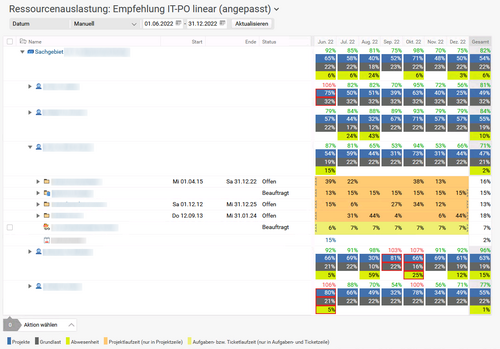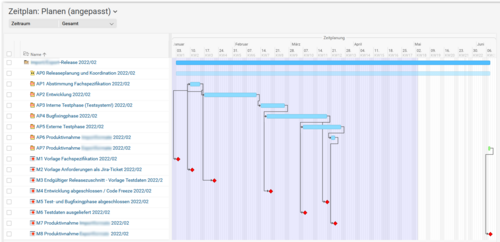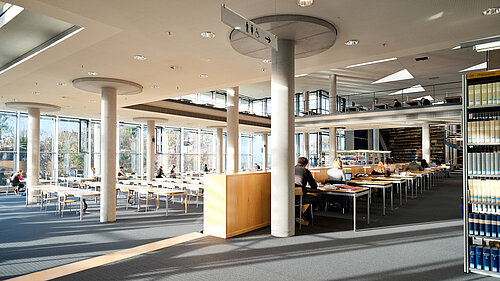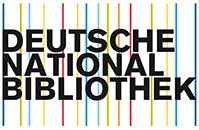Overview in multi-project and product management
User report from the German National Library
The German National Library is Germany's central archival library with locations in Leipzig and Frankfurt am Main. In order to fulfill our legal mandate and as part of our cooperation in the national and international library landscape, we carry out a wide variety of projects. In 2007, Projektron BCS software was used to support the organization and implementation of these projects.
The German National Library and its projects
In accordance with our legal mandate, we collect, document and archive all media works published in and about Germany or in the German language since 1913. Whether books, journals, CDs, records, maps or online publications - we collect without evaluation, in the original and without gaps. The resulting demands and challenges, can not always be implemented in the everyday environment. In addition, there is the cooperation with national and international partners, which often takes place in the project environment. The latter makes up about 15-20% of the current projects; with durations between one and three years.
Currently, the German National Library (DNB) is engaged in several (ongoing and planned) projects with the expansion of the Common Data Base (GND), e.g., to other cultural and knowledge institutions (GND4C). The area of research data in the context of the national research data infrastructure will also play a greater role at DNB in the coming years in various facets (e.g. NFDI Text+).
Software support for our PMO
As early as 2007, we decided to set up a "Project Organization" team (now called "Project Management Office") in order to better manage the increasing number of projects and the associated, also increasing, demands on our IT. Another goal was to standardize and optimize project management at DNB. In parallel, the desire arose to obtain a better overview of IT resources and thus possible capacities for projects. It became apparent early on that the Project Management Office (PMO) would need software support to fulfill its tasks.
Web-based and powerful: What spoke for BCS
At the end of 2007, we decided to use Projektron BCS. In addition to functions to support multi-project management, project planning and time recording as well as resource management and reporting, the web-based approach also played a role in the selection due to our multiple locations. For the actual project planning, time recording and resource management, BCS was initially only used in IT. Outside of IT, time recording for projects was done on an existing house-wide controlling tool.
Mastering all changes over the years
Since we started using BCS 15 years ago, our PMO in particular has continuously relied on the software. In addition, there is a special focus of use in IT. For example, concrete structure and effort planning as well as feasibility checks based on resource utilization are only used for the IT department; the same applies to resource management for all IT employees involved in projects, products and special projects. Ongoing project controlling takes place primarily in joint meetings between the PMO and those responsible. BCS provides in-house support, for example, for multi-project management, project overviews, the creation of project statistics and the documentation of meetings.
In terms of the scope of BCS usage, there have been multiple changes over the years:
In 2016, the first major change occurred by expanding the use from IT employees* in projects to all IT employees*. Time recording was now only done in BCS and therefore no longer only on projects, but on our entire controlling spectrum. In return, the IT department decided not to use the company-wide controlling tool. This was in response to a major request from IT staff, some of whom had previously had to record time in both systems.
At the same time, IT introduced a product line with fixed release cycles. BCS was also used to plan and control this product line. By scheduling the products with expenditures in fixed and recurring time periods, IT's resource management can be sharpened. Ongoing product controlling, evaluations and the mapping of cross-product dependencies in addition to the projects created enable IT to obtain a sharper picture of the resources and topics used and thus also provide better estimates of the future use of IT resources. It also increases transparency, especially to DNB's other departments. The insights gained in this way also support the strategy process of the IT department.
The expansion of the tool to all IT employees and the associated improved management options for superiors were associated with a clearly recognizable increase in acceptance of the tool. This can also be attributed to the fact that it was easier to communicate the meaning and purpose of the recorded times, especially since BCS, in contrast to the company-wide controlling tool, offers all users the possibility of gaining insight into the personally recorded times.
At the same time, IT introduced a product line with fixed release cycles. BCS was also used to plan and control this product line. By scheduling the products with expenditures in fixed and recurring time periods, IT's resource management can be sharpened. Ongoing product controlling, evaluations and the mapping of cross-product dependencies in addition to the projects created enable IT to obtain a sharper picture of the resources and topics used and thus also provide better estimates of the future use of IT resources. It also increases transparency, especially to DNB's other departments. The insights gained in this way also support the strategy process of the IT department.
The expansion of the tool to all IT employees and the associated improved management options for superiors were associated with a clearly recognizable increase in acceptance of the tool. This can also be attributed to the fact that it was easier to communicate the meaning and purpose of the recorded times, especially since BCS, in contrast to the company-wide controlling tool, offers all users the possibility of gaining insight into the personally recorded times.
Conclusion: Very satisfied with product and support
Over the past few years, Projektron BCS has been continuously developed and its range of functions expanded. Even though we are far from exhausting all of the possibilities that are now available, we are very satisfied with the use and development. What we particularly appreciate about Projektron BCS is the combination of project planning and resource management, as well as the fine-grained rights structure, which allows differentiated views of the project participants from different departments.
Also worth mentioning is the very good support from Projektron, the willingness to give customer-specific adjustments the necessary space in the exchange and to not only take on board suggestions, but to actually integrate them into the system if necessary.














